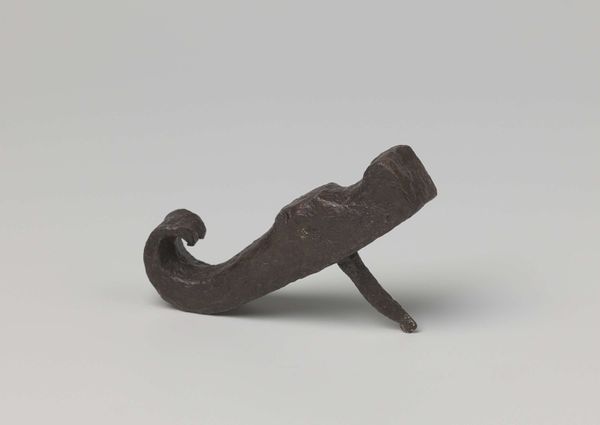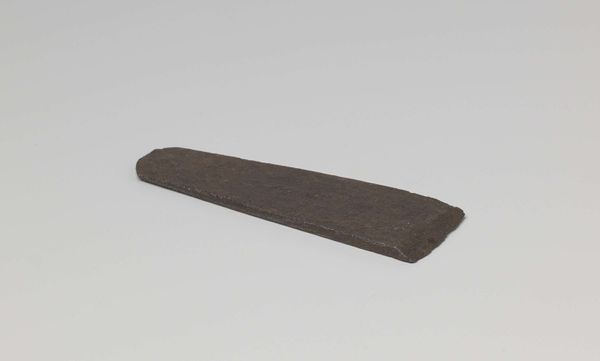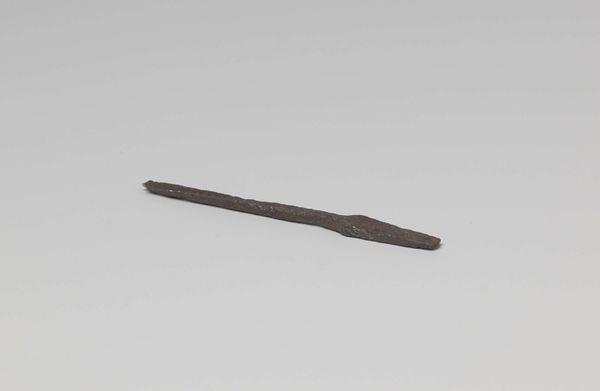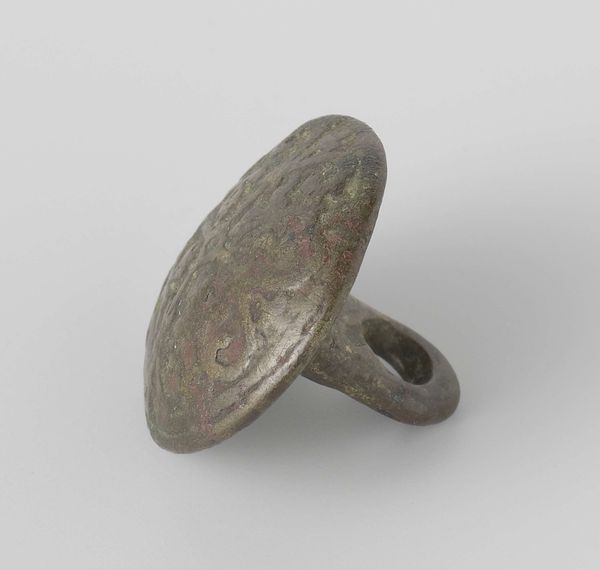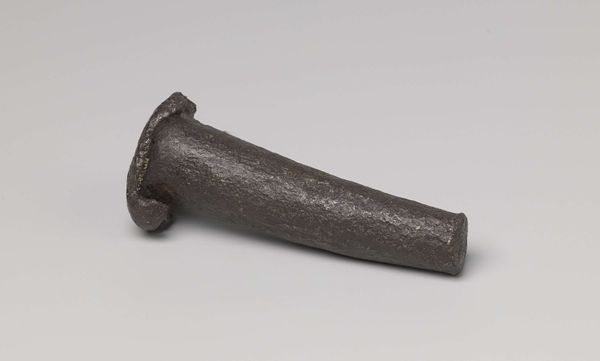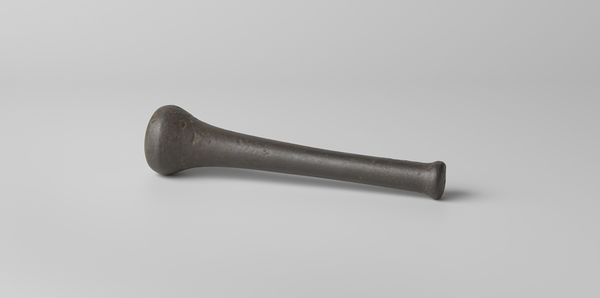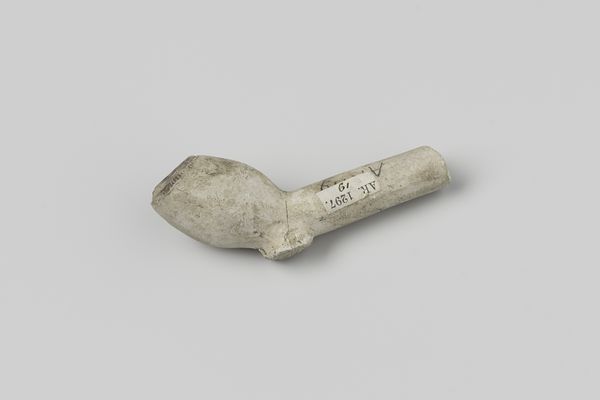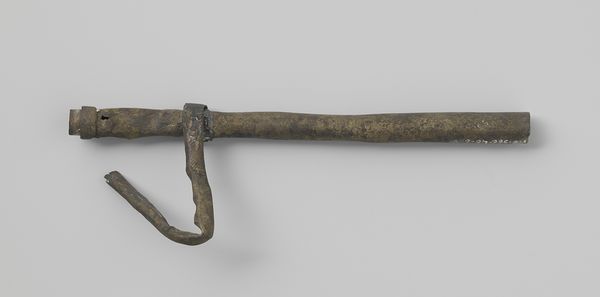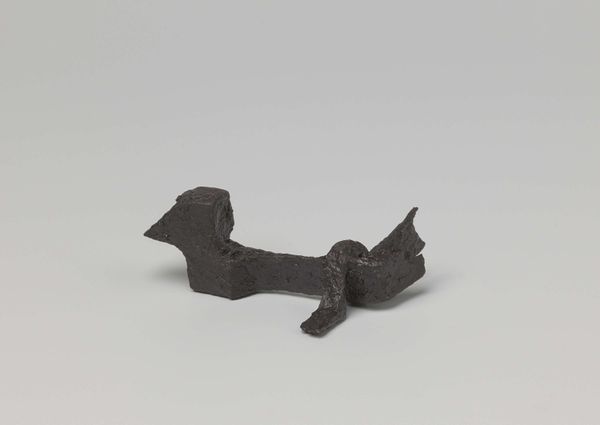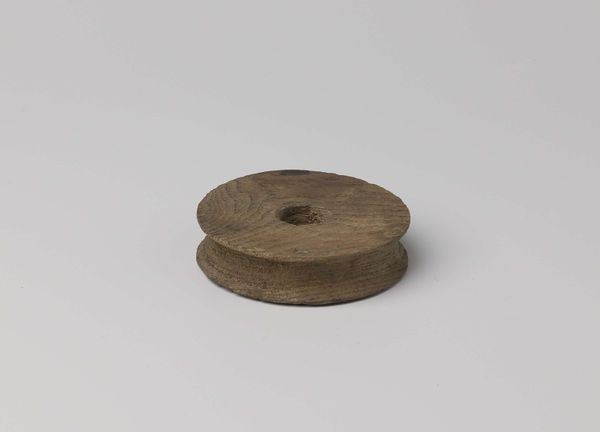
carving, metal, bronze
#
3d sculpting
#
3d model
#
medieval
#
carving
#
3d printed part
#
rounded shape
#
metal
#
plastic material rendering
#
virtual 3d design
#
bronze
#
3d shape
#
metallic object render
#
3d modeling
#
product render
Dimensions: length 16.5 cm, width 12.4 cm, depth 3.5 cm
Copyright: Rijks Museum: Open Domain
Editor: So this is an anonymous, bronze or metal “Gietvorm voor het handvat van een tinnen kan” from 1621. It looks so simple, almost brutalist, in its geometry and material, but it has such presence. What do you see in this piece? Curator: I see echoes, don't you? Echoes of craftsmanship, certainly. The metal itself remembers the fire, the mold remembers the artisan's hand. And beyond the immediate making, there’s a resonance with ancient metalworking traditions; consider the lost wax casting technique. Each pour a ritual, each form imbued with the intention of generations. It's a physical link to a past we often only read about in books. Does it conjure images for you, Editor? Editor: I guess it does, the final object from the mold… and the hands that held the can that the handle belonged to. It’s a kind of ghostly positive image, not negative. Curator: Exactly. The symbol resides not just in what IS depicted but what it PRODUCES. The hand itself becomes a tool, extending the artisan's will. And observe the shape; what symbolic associations arise? Editor: I see kind of a stylized bird head shape on the end there... birds represent freedom? Curator: Perhaps. Or messages carried. What could freedom or messages mean within the context of holding and pouring? This everyday object could have layers of meaning we no longer readily grasp, a testament to the symbolic richness of daily life back then. Editor: I hadn’t thought about the levels of interpretation in something this practical, that's very insightful. Curator: Well, it reminds us that even the simplest object carries layers of cultural memory. Hopefully visitors will see how much one object, or a fragment of one, can tell us.
Comments
No comments
Be the first to comment and join the conversation on the ultimate creative platform.
